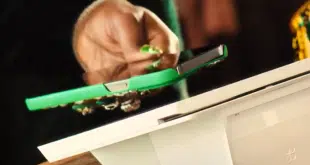Unlike efforts during the dotcom boom to introduce mobile payments and banking?efforts that turned out to be more about hype than substance?initiatives emerging now to deliver financial services via mobile phones will find a ready and willing market, according to executives with a major wireless carrier and bank card network who spoke Thursday at a payments conference sponsored by the Federal Reserve Board of Chicago. “We took a look at this several years ago and didn't think the market was ready,” said Spencer White, director of business development for consumer data services at AT&T Inc. (formerly Cingular Wireless). “There are several reasons to think things are different today.' Among these reasons are improvements in both handset and network performance, including more data applications on phones and more robust, higher-speed wireless infrastructure. At the same time, mobile phones have proliferated to the point that 236.5 million people in the U.S. now carry one. “Phones are the Swiss army knife of the 21st Century,” said White. “And they are ubiquitous.” Still, while White downplayed tensions between carriers and banks that have been blamed for slowing progress, he told Digital Transactions News services such as mobile commerce, which allows consumers to pay online merchants via handsets, could be “years away.” Niki Manby, senior vice president of product innovation at Visa USA, cited recent survey statistics to reinforce her point that consumer demand is rapidly mounting for mobile banking and payments. Some 57% of consumers who own a payment card (not necessarily Visa) said they are interested in mobile payments, she reported. Of these, 90% would pay more for a device with payment capability. Also, 64% of consumers aged 18 to 42 in this group would consider switching carriers to get payment capability, while 58% would think about switching banks. “These numbers are compelling when you consider how few consumers have actually done [mobile payments],” she said. AT&T has participated with Visa in a test of contactless payments based on mobile phones outfitted with near-field communication (NFC) chips. The company is also in the process of rolling out a mobile-banking service that relies on an application developed by Firethorn Holdings Inc., an Atlanta-based software startup. BankcorpSouth, which tested the program and earlier this year began rolling it out to its account base, has seen the average number of monthly log-ins to its online-banking program jump 35%, to 17.6 per month per user, since introducing the service, White said. He called mobile banking “low-hanging fruit” because it appears to users to be a natural extension of functions they're already performing on phones and required only “light lifting” at the network to enable. Mobile payments, however, could take longer to commercialize. White said AT&T is moving “deliberately” in areas such as person-to-person and NFC payments, hoping to avoid locking into programs that can't be standardized for its 62.2 million subscribers. “Our customer base is as diverse as the U.S. population,” he said. This requires applications that work the same?and simply?across the network. “We're a very much mass-market company, so if we're going to make an investment [in mobile payments], we've got to know we're going to hit that market,” White noted. For this reason, he said, AT&T has so far refused to enable handset-based P2P services from PayPal Inc. and Obopay Inc. At the same time, though the carriers and bank card networks have scrapped over the issue of controlling consumer access to mobile payments, White said this issue has been overblown. Banks, he said, fear the uncertainties that come with the need to work with carriers, a factor they don't face with card-based payments. “I won't pretend there isn't conflict, but it's often born of fear of the unknown,” he said. “For larger [financial] institutions, this can be challenging because they're used to calling all the shots and having all the control.” Still, both Manby and White conceded a number of barriers remain. One stems again from AT&T's need to standardize applications, said White. In working with banks, AT&T confronts the challenge of trying to suit thousands of individual institutions and potentially as many separate applications. “There's a tremendous bottleneck, with 20,000 banks and three significant gatekeepers,” he said, pointing to the three major national wireless operators, Verizon Wireless and Sprint as well as AT&T. “We're trying to develop a front door for money,” White said, referring to the carrier's strategy of giving its subscribers a single point of contact not only for payments but also for customer-service issues. M-commerce, which Obopay has introduced and PayPal says it will introduce soon, could be a difficult challenge. Speaking to Digital Transactions News, he said AT&T envisions using the wallet software it relies on for NFC payments to make payments to online merchants work over mobile phones. The integration work to link these wallets to merchant sites, however, will be tricky.
Check Also
Restaurant POS Providers Roll Out Spring Enhancements
Providers of restaurant point-of-sale and management technology continue to enhance their offerings as restaurants remain …





